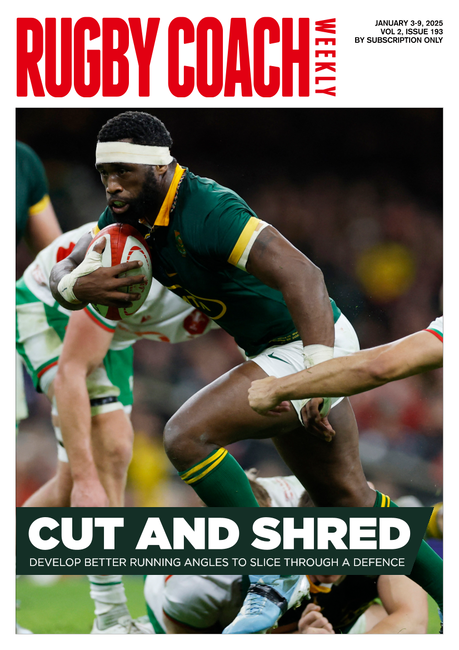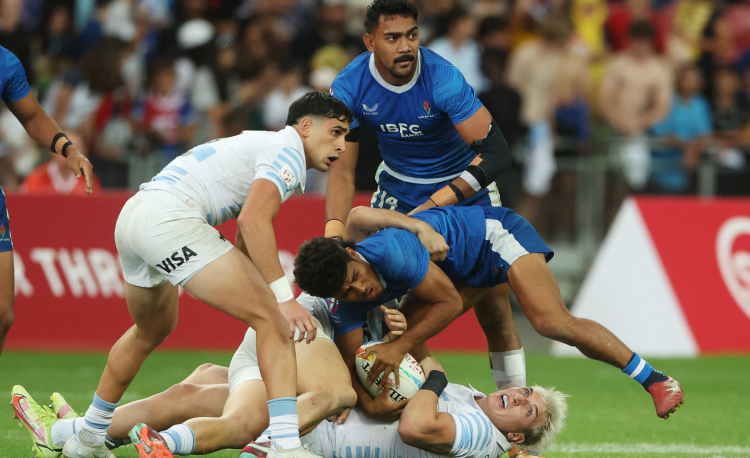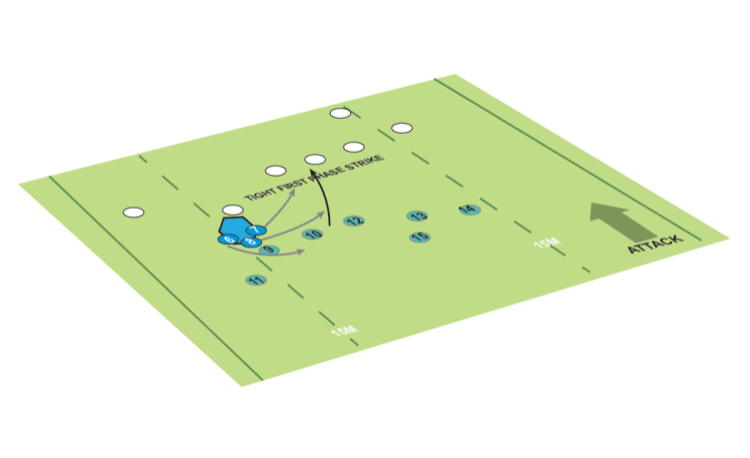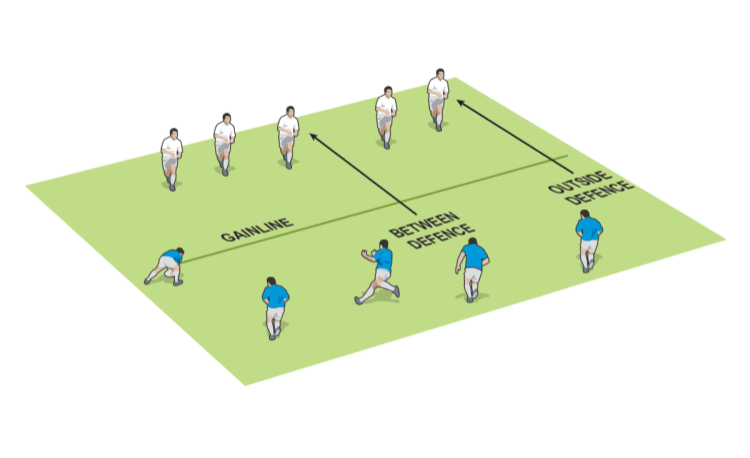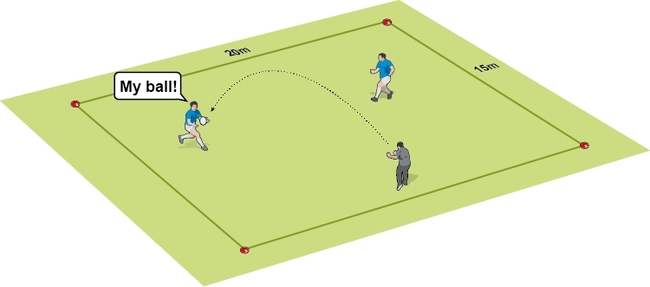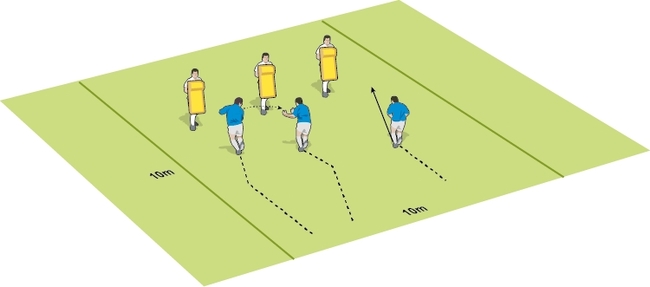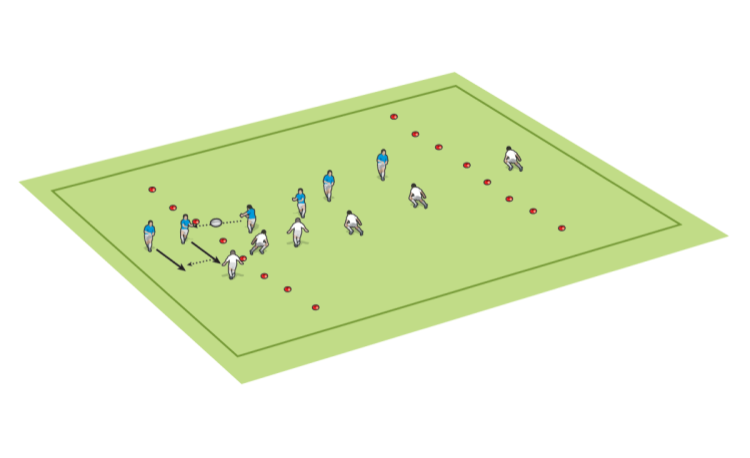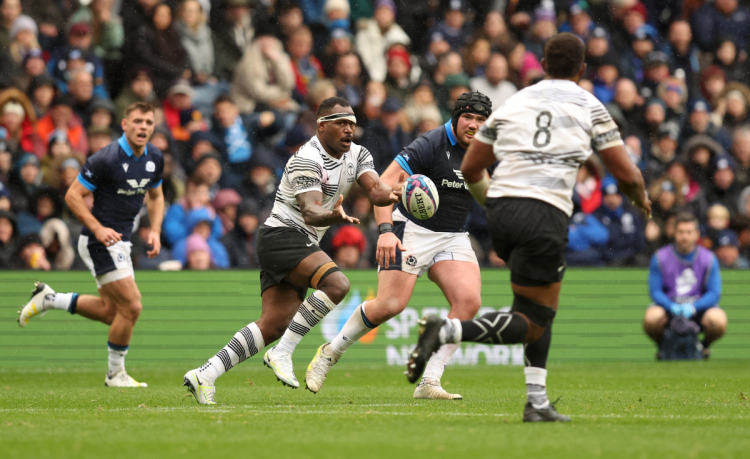Get deep! Get deep!
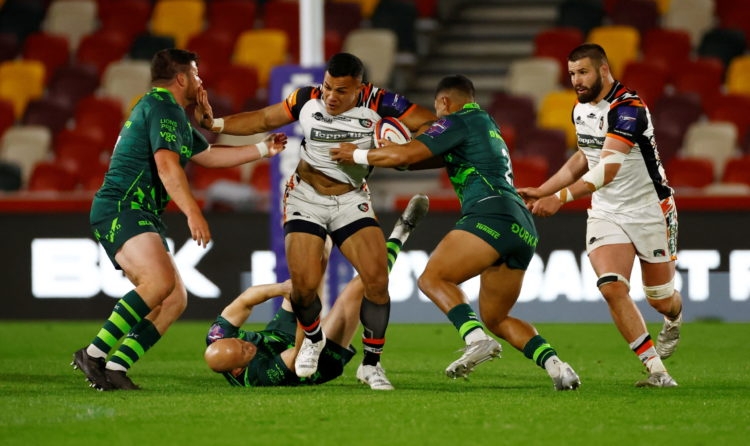
“Get deep!” is a common call to get the backline to be in a position to run onto the ball. One way is to ask the players whether they can see the number on the back of the inside player. How can you create better scenarios though?
You can create scenarios where the players must run into position and then react. That’s because the game is dynamic – rucks and/or mauls happen at different speeds.
Trying to replicate this in touch rugby games can be quite difficult because you can’t reproduce rucks in quite the same way as a normal game of rugby. To start the process of learning “depth”, I use an exercise where the players should realign based on some cones on the ground. You can see how this works in Ready, Steady, Attack.
I’m not a big fan of using cones to reposition players as a rule. It makes them look down and the position of cones doesn’t reflect a defence: their speed, their relative skills or who they are marking.
However, and especially for developing players, these cones start the process of understanding that they can create pace onto the ball by how they position themselves. One way I’ve done this with this particular exercise is to have the players have a couple of goes at the exercise and then reposition the cones themselves.
For some reason, they find themselves adjusting in other ways. Because they know they need to be running onto the ball, and if they might have put the cones in a sub-optimal position, they naturally adjust their running lines.
Then, I take away the cones, asking the players to remember what they were aiming to do. I don’t tell them. They might give me the right answer verbally, but I’m most interested in their outcomes. In other words, are they running onto passes?
To further improve their awareness, I won't say who got it wrong. I use two methods. First I ask the players to say if they were static or slow onto the ball. Second, I ask the defence who was running onto the ball. In the end, they are the ones who need to be stressed by better running pace and angles.
I don’t mind players who’ve overrun the pass, as long as they were running at pace. There’s always next time. And that also means, though one player will receive the killer pass, I want lots of players to be attacking the line at the same time.
GAME CONTEXT
Removing the cones certainly makes this activity more game realistic. To add further realism, you need to create various “rucks” where players must realign from and then attack at pace.
I used to spread out lots of different “rucks” across the field in the form of cones and pads. Now, I mix this approach with smaller movements. That is, the ruck situation might only be 5m from the start point. This is more like a game situation and tests the players just as much as sweeping movements across the pitch.
Because the coned rucks are closer together, the players have to realign quicker, because there’s less thinking time involved. Now there’s a challenge for the forwards!
Related Files
Newsletter Sign Up
Coaches Testimonials

Gerald Kearney, Downtown Las Vegas Soccer Club

Paul Butler, Florida, USA

Rick Shields, Springboro, USA

Tony Green, Pierrefonds Titans, Quebec, Canada
Subscribe Today
Be a more effective, more successful rugby coach
In a recent survey 89% of subscribers said Rugby Coach Weekly makes them more confident, 91% said Rugby Coach Weekly makes them a more effective coach and 93% said Rugby Coach Weekly makes them more inspired.
Get Weekly Inspiration
All the latest techniques and approaches
Rugby Coach Weekly offers proven and easy to use rugby drills, coaching sessions, practice plans, small-sided games, warm-ups, training tips and advice.
We've been at the cutting edge of rugby coaching since we launched in 2005, creating resources for the grassroots youth coach, following best practice from around the world and insights from the professional game.


